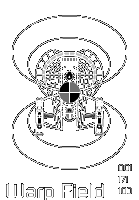The thing i don't get about that imbalance scene was wouldn't the asteroid have to be traveling at warp speed or near warp speed for that to happen? and is that possable for a asteroid to get going that fast? Technobabble i guess.
There's two images that I usually associate with warp drive:

and

The first image I associate with initiating a warp field, and the second with a stable field once established.
The first image shows the push or dimpling on normal space as the field starts to tunnel to subspace, and the second image shows the established field bubbling around the ship in subspace, the front dimpling subspace and the back folding it back.
Now when the field went into imbalance, the front field started to fluctuate and started to form eddies and funnels in normal space, and when the wormhole formed and the stable warp field collapsed, those eddies and funnels coalesced into the wormhole pulling the matter in them into the wormhole.
As an aside, I always thought that this nicely explained the limitation of Warp 10 as well.. to create a field to allow faster travel, a ship would have to put in more power to the fields and keep them stable. Once you reached Warp 10, the field would have to encompass the universe and the ship would almost have to be almost everywhere at once. That'd be the transwarp barrier, same as the warp barrier. To move FTL, subspace was required to allow something to move out of the constraints of the normal physical limitations of the universe. To move transwarp, you'd have to almost go into a sub-subspace.